“I did just build a Chena with World War II fighter planes on it for a guy”: With celebrity fans including Billy Morrison and Steve Stevens, luxury guitar maker Joe Knaggs sets his sights on six-string perfection
Joe Knaggs started at PRS guitars before forming his own company. Their goal? To make high-end instruments that “ignite the senses and summon the muse”. Discover his unique take on guitar design and plans for the future
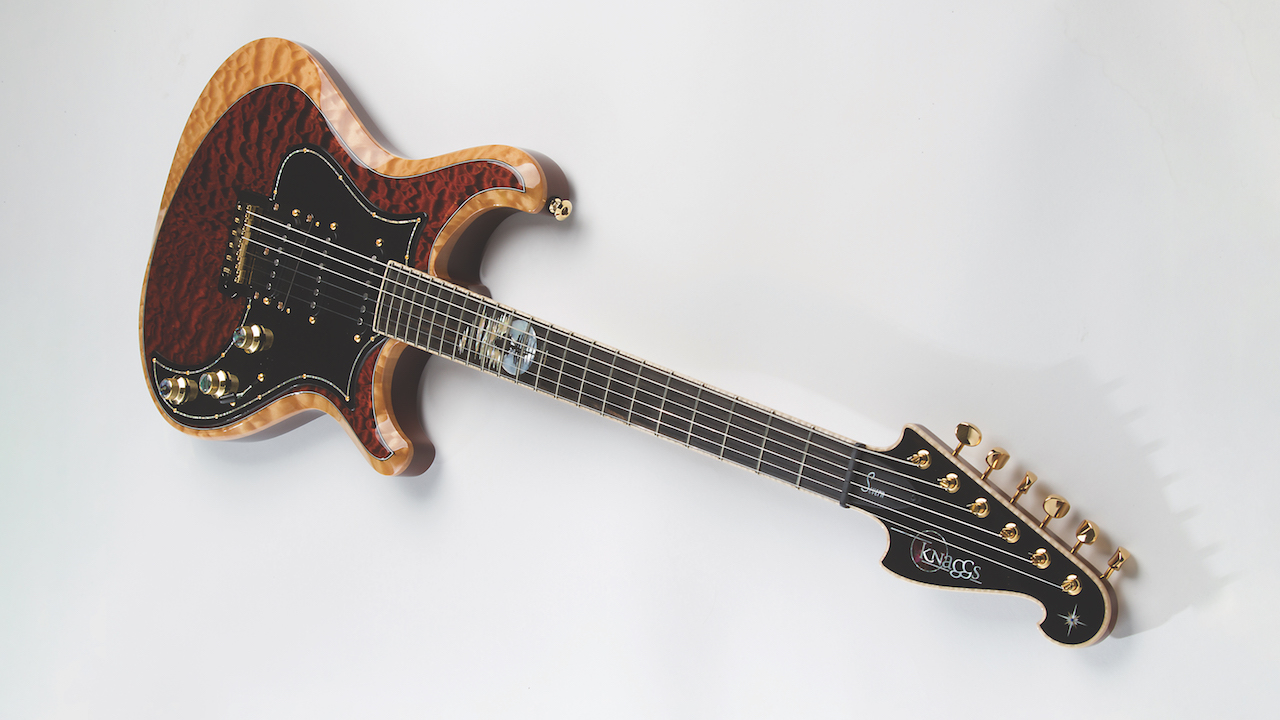
Joe Knaggs has carved a stellar reputation for his craftsmanship and design skills since he and his business partner, Peter Wolf, left PRS Guitars in 2009 to form Knaggs Guitars.
The Maryland-based guitar maker had a goal to make high-end instruments that offer awesome playability, leading-edge quality and attention to detail, as well as jaw-dropping finishes, including the two-tone schemes that Knaggs pioneered.
Those are often with inlaid purfling dividing the colors, such as we saw on the Severn Trem SSS dressed in luscious Seafoam Green and TV Yellow reviewed in our December 2023 issue.
But that particular guitar represented just the tip of Knaggs’ iceberg. The company lets buyers personalize their instruments with an extensive array of options in neck and body woods, hardware, pickups and finishes that are offered within the Chesapeake, Influence, Signature and Creation series.
In doing so, Knaggs gives players incredible flexibility in the style of music they play and the tones they seek to achieve ultimate expression.
The Severn Trem SSS I had the pleasure of using for a few weeks during the peak of California’s hot summer was a beautiful guitar with great playability and tones, and amazing tuning stability.
One of the many things that impressed me was its innovative Chesapeake trem, a unique vibrato system in which the bridge pickup is surrounded by a steel plate, in Tele fashion, while the hinged bridge riding behind it rests on roller bearings that allow it to move with uncanny smoothness and return-to-pitch precision.
Get The Pick Newsletter
All the latest guitar news, interviews, lessons, reviews, deals and more, direct to your inbox!
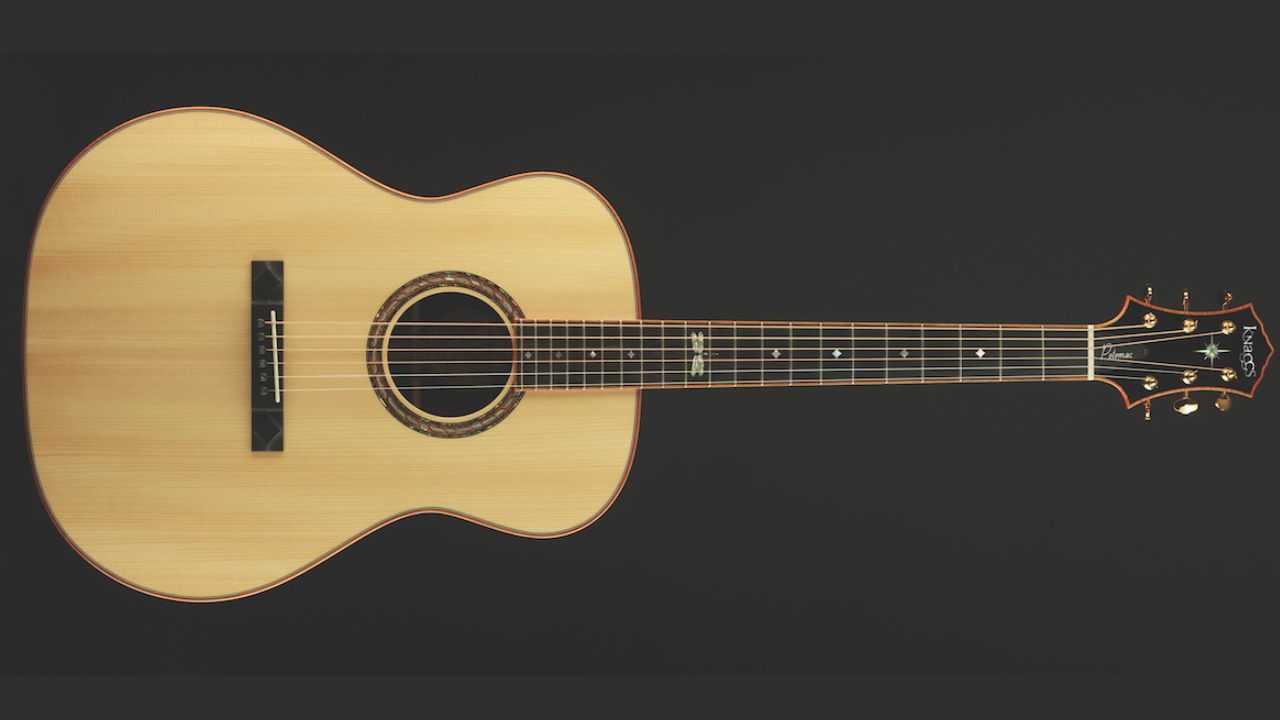
Stability is the watchword here, so I asked Knaggs to detail how he combines it with ease of playing, and what role the woods he chooses play into the overall equation.
“That’s kind of where it all begins,” he explains. “There was a guy at our shop who had an SG that he couldn’t keep in tune. I looked at the neck wood, and it was this punky mahogany that some overseas companies use — the same stuff they make cheap furniture out of.
“That’s an extreme example of neck wood that you don’t want to use. It could even be quarter-sawn, but it’s just unstable. We’re making all of our necks out of Honduran mahogany, and we have rock maple that we dry out properly and use it quarter-sawn.
“When I was a few years into it at PRS, I started carving necks, and Paul showed me a bunch of stuff. I actually carved some of the digitizing jigs that we used to make the neck shapes from, and that was something I got under my belt.
“When I feel different necks — like some Martins, for instance — they can be really deep, and there are good aspects to that and other aspects that are too extreme. So it’s nice to blend them together, like in a slight V or a C shape. It makes for a neck that’s really comfortable to play, but not overdoing it where you feel the V on the back of your hand.
“I’ve felt old Telecasters that are that way, and it’s fine, but to me the ultimate goal is to have something that fits in your hand comfortably.“
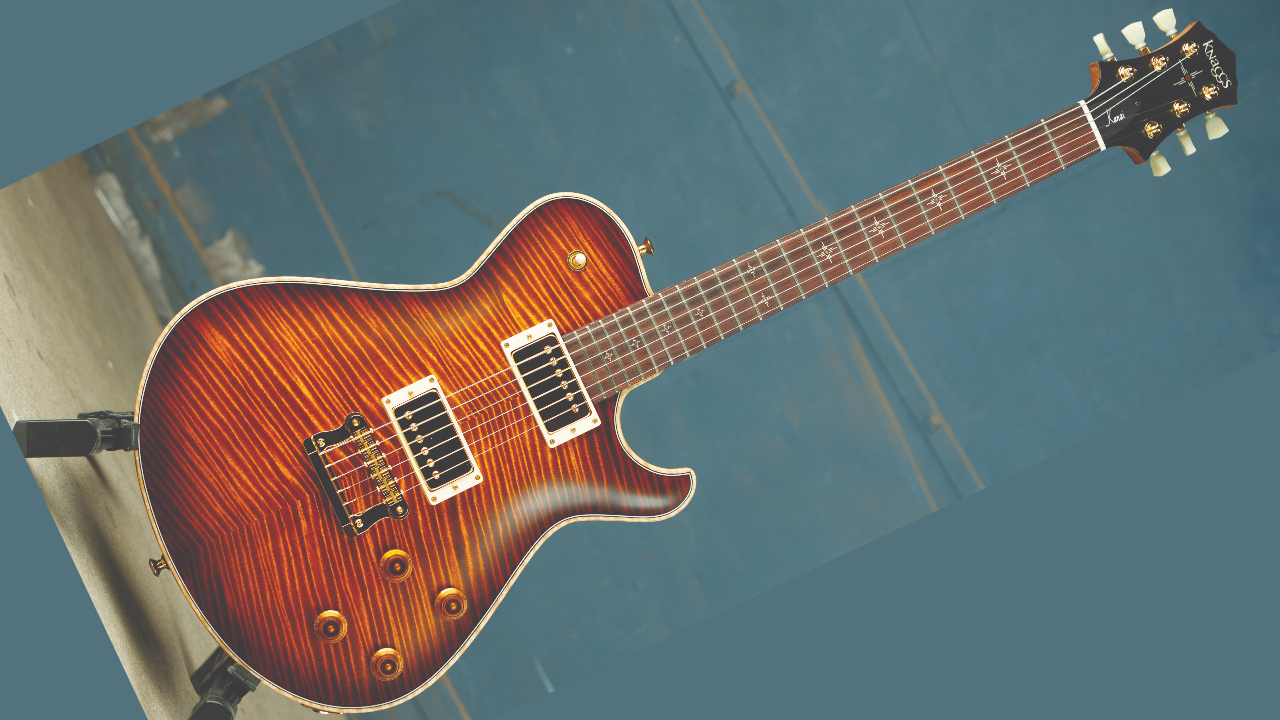
We hear a lot about diminishing supplies of quality wood. Has that been a problem for you?
We have a good supplier, but it’s not as available as it used to be, and you have to go through a lot more wood to find the good stuff.
I have a cutter that knows what I’m looking for, and he goes through it and finds us what we want. That really helps out a lot. I used to have to go to [lumber company] Alan McIlvain in Pennsylvania, and go through stacks of heavy, long pieces, and then we’d have to plane the edges and see what the quarter-sawn part of it looked like. I used to do that at PRS too.
So the short answer is it’s certainly not as readily available, but I haven’t run into a big problem with that, and we’re getting good curly maple, good mahogany, and good ebony and rosewood.
Knaggs guitars are influenced by classic designs, but instead of rehashing those platforms you’ve developed guitars that are unique in their own way. How did you accomplish that?
People are used to playing Les Pauls, Stratocasters and Telecasters, and PRS could be in that context too. People are creatures of habit, and of course there’s always that desire to play guitars that fit into that niche.
If you look at the Choptank, which was the first guitar I built, I combined elements of the Telecaster and Stratocaster, but there are things I did that make it unique.
With the Kenai, the shape is based on the Les Paul, and it’s as thick as a Les Paul, but thinner at the neck. The body is also curved on the back. I wanted to make it so that it sort of wrapped around your body, with the belly carve and everything. So we optimized the thought of it being like a Les Paul, but we made it more comfortable to play and unique in its own way.
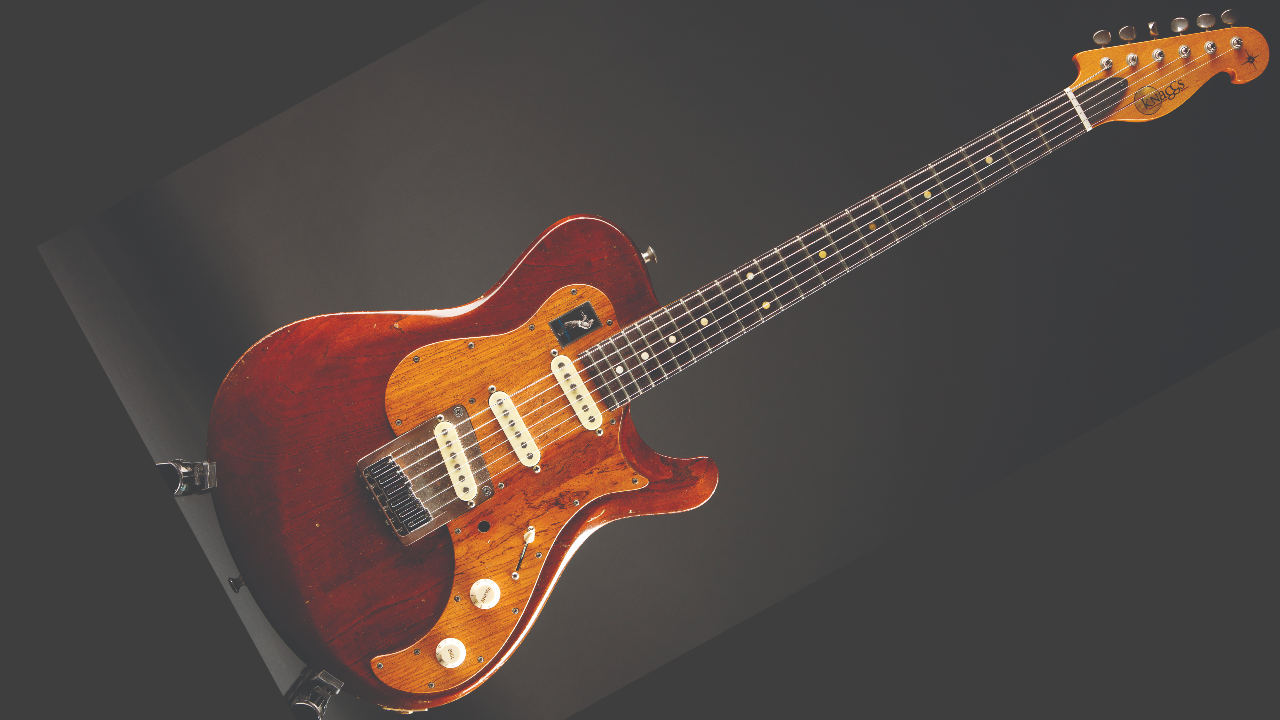
How did the Kenai evolve into so many other iterations?
People wanted a Tune-o-matic on it, so we did that. And then we did one with a wrap-around bridge, one with P90s and one with a five-way blade switch and a hum-single-hum configuration. We even put a Severn headstock on a Kenai. So there have been all these little Frankensteins of that model.
However, in the end there’s the Kenai, and that to me is two humbuckers, the Knaggs Influence bridge and the Kenai neck shape and headstock. But we’ve done variations of every model we’ve made.
Is that all in the interest of optimizing guitars to suit the needs of players?
I guess you could say we’ve optimized each model in that way, but usually in a business like Fender, Gibson or PRS, there’s a number of guitars you sell in a certain configuration, and that tells you what the public actually wants. And we’ve seen that with the Kenai.
The Severn has been a little different, because we probably sell as many HSSs as we do ones with three single-coils, and I understand that. It’s nice to have that humbucker back there so you can crank it up and not have the noise problems.
And then we’ve done the Severn X, which has a flatter fingerboard and a little wider neck, and sometimes with humbuckers in it. But we haven’t sold as many Xs as we have regular Severns.
When you mention the Severn X, it brings to mind [Knaggs signature artist] Steve Stevens. And speaking of variations, you did an Evertune bridge for him.
Steve plays his SSC and the Severn SSXF all the time. We did the Evertune for him because we get a lot of R&D out of Steve. We figured, Let’s try this and see what happens with it. So Steve plays it out there, and that’s the big one to me.
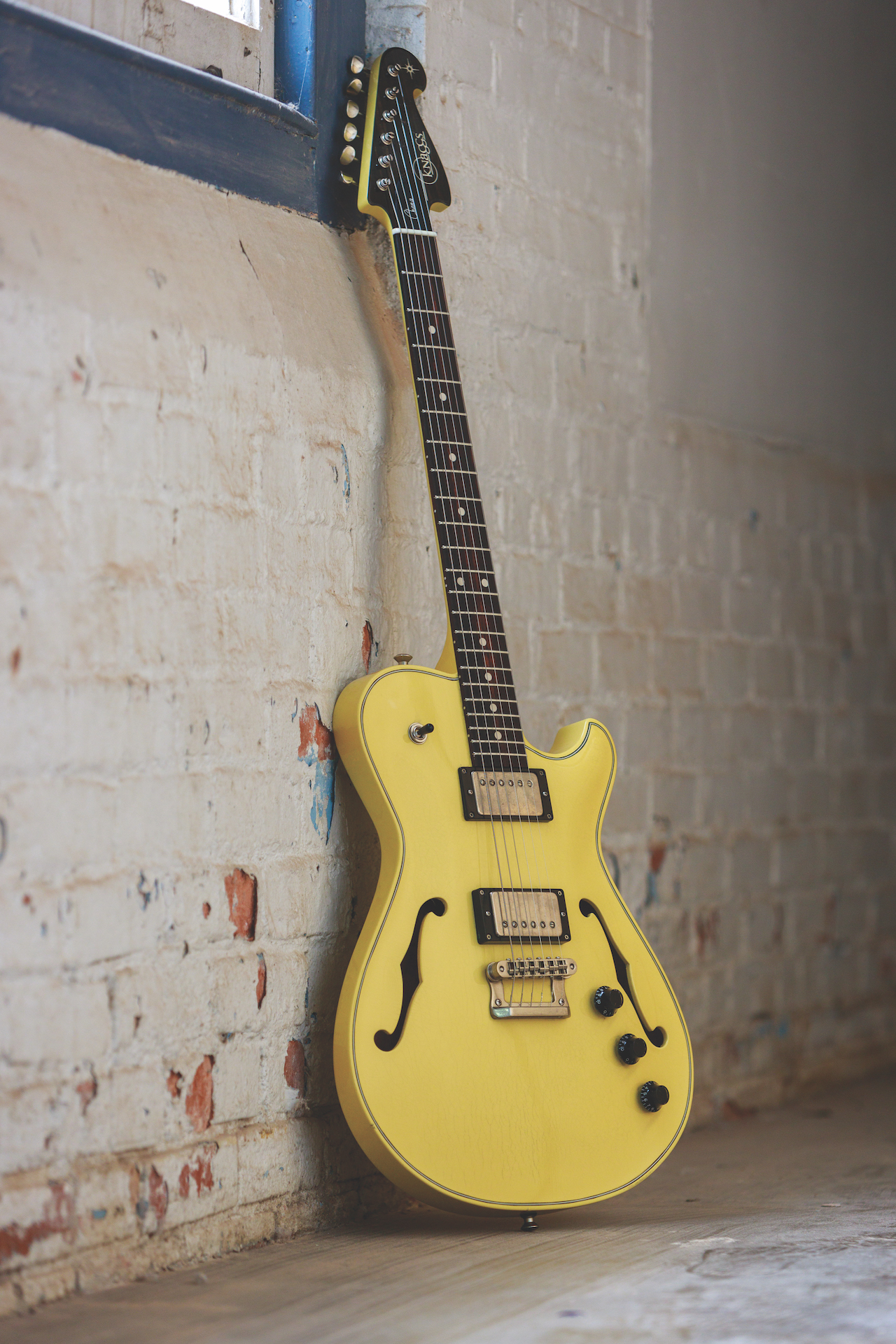
Didn’t he also play a Chena?
He played the Chena onstage a long time ago. The Chena is based off the original Chesapeake. It’s got a carved back and is hollow in the middle, so it’s kind of a cross between what I did at PRS with the Hollowbody model, combined with that carved back of the original Chesapeake that I made.
We’ve been getting a lot of inquiries about the Chena, and it’s a great guitar for jazz and blues. It doesn’t go quite to the ES-175 side, but it falls in between somewhere, so it’s kind of a neat thing.
We’ve made a guitar for just about every kind of player you can think of, but there’s still some things we want to do. Like, I want to make the Chena completely hollow, with a trapeze tailpiece and all that so it’s more along the lines of an ES-175.
When I listen to Pat Metheny and George Benson, there’s a sound they get from hollow guitars, and I wouldn’t mind doing something like that.
Did the Ibanez George Benson influence any of your ideas for hollow guitars?
The Ibanez George Benson was exactly the guitar I thought of when I did the PRS Archtop. I love George Benson, and I love his guitar and the size of it. The Chena is definitely a spin-off on that.
You’ve mentioned that the Choptank, which is basically your take on a Tele, had a bridge design that inspired you to start a guitar company.
Yeah, that was the original bridge design, which goes hand in hand with a Tele. And we’ve got a trem version of that bridge, too. So that model is definitely one that goes along those lines. There are players in Nashville, like Ben Miller and bunch of others, who play the Choptank, and they love it.
With the Strat, there have been all these Superstrats and variations on the theme, but people didn’t do as many variations on the Telecaster. The Tele was kind of in the back, you know? But I think every single thing that’s been done with the Strat you can do to a Telecaster.
That’s kind of the idea behind the Choptank Trem, which has a Telecaster pickup in it. People see that they can do trem stuff with a Telecaster sound.
The Choptank is my favorite guitar, and my original one is what I play all the time. It’s another arrow in the quiver for us, but I don’t think anyone has really gone at it with that guitar yet.
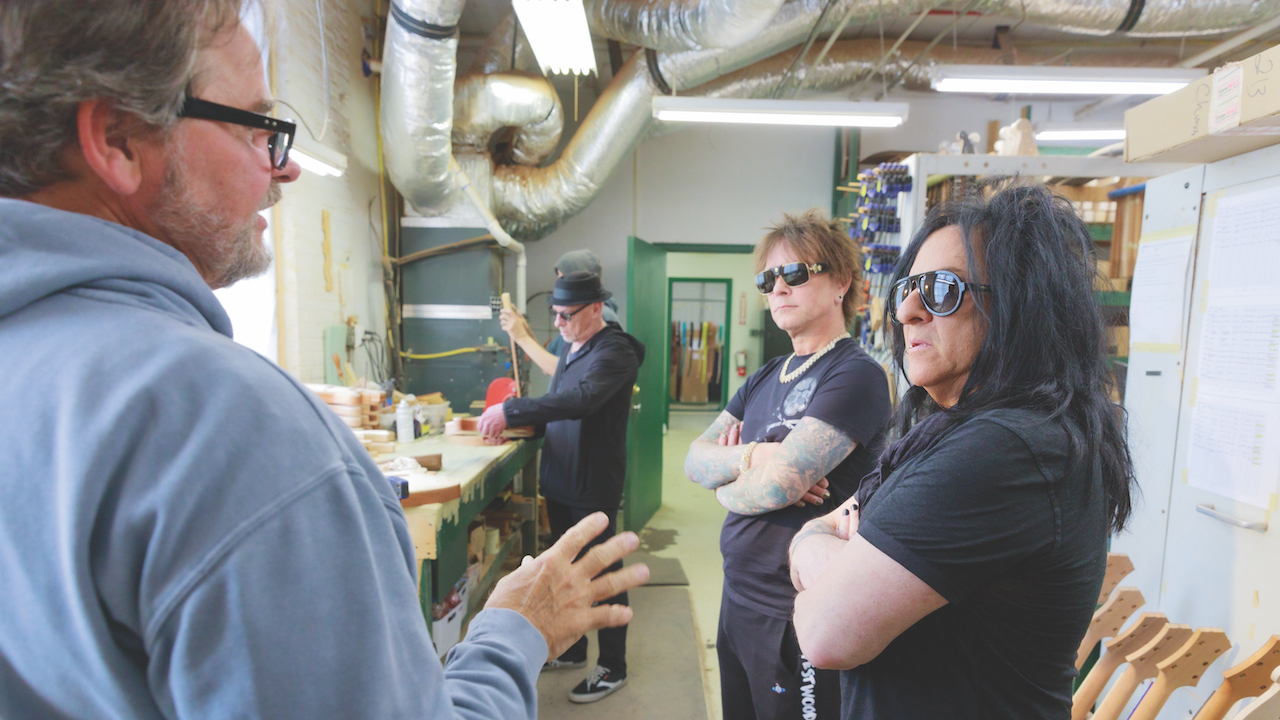
Are there other guitars you’d like to make?
We have so many models that I don’t think it’s good for us to put anything else out there right now. We’ve been here for 13 years, and people are just starting to know who we are and what something like a Kenai is.
But, yes, there are a couple of things I have in mind that I want to try. I want to mess with the Chena. I was a jazz player growing up, and that sound is something you only get from a guitar that has a wooden bridge and a trapeze tailpiece and is hollow inside. Sure, you can play jazz on a Choptank, and it’s an unbelievably great-sounding guitar. And Mike Stern played jazz on a Telecaster! But that whole George Benson/Pat Metheny thing is something I definitely have thoughts on doing.
I’d like to play around with some different acoustics, too. I’ve only made a hundred of them, and we don’t even have it in our price list, because it’s not something I want to gear up for in the shop. But I make them for myself and just hand-pick each one. I’m making four or five right now, so that’s something I enjoy doing, and I’ve come up with some really good things on the design end with the way we carve the braces and where we carve them to get the most sound out of it.
There are a couple of things I want to try. I want to mess with the Chena. I was a jazz player growing up, and that sound is something you only get from a guitar that has a wooden bridge and a trapeze tailpiece and is hollow inside
Do you function like a custom shop in the sense that guitarists have so many different options for the models you offer?
I think we do, because with all the available options, you can have anything you want in one of our guitars. Customers can also make requests, although it depends on what it is and how it pertains to the model, especially if it’s something I don’t think will be a good thing for the guitar. Like, if someone says, “Will you make it out of oak?” that’s a no. But we do have the Creation Series if someone really wants to go off. We don’t do a lot of those, because I’m pretty busy, but I did just build a Chena with World War II fighter planes on it for a guy, so that’s something we’ll do.
But I’m on this planet to make really good guitars for the purpose of making music. Like, I’m watching this kid Matteo Mancuso play a Yamaha Pacifica, and he’s tearing it to pieces. That’s probably not your dream guitar, but when he’s playing it, it might be just that for someone, and in the end they’re going to be happy.
The thing is, people can dream up anything they want in a guitar, but in the end is it something they want to play? I’m up here in my room right now, looking at the original Choptank I made. I’m thinking to myself, The fingerboard is simple, and all the dots have turned yellow, and it’s got the original Brazilian rosewood pickguard. I don’t have a lot of time to play music, but there’s something about it that makes me want to grab it and play. And that’s the beauty of it.
To find out more about Knaggs Guitars visit their website

Art Thompson is Senior Editor of Guitar Player magazine. He has authored stories with numerous guitar greats including B.B. King, Prince and Scotty Moore and interviewed gear innovators such as Paul Reed Smith, Randall Smith and Gary Kramer. He also wrote the first book on vintage effects pedals, Stompbox. Art's busy performance schedule with three stylistically diverse groups provides ample opportunity to test-drive new guitars, amps and effects, many of which are featured in the pages of GP.
Guitar Center's Guitar-A-Thon is back, and it includes a colossal $600 off a Gibson Les Paul, $180 off a Fender Strat, and a slew of new exclusive models
"We tried every guitar for weeks, and nothing would fit. And then, one day, we pulled this out." Mike Campbell on his "Red Dog" Telecaster, the guitar behind Tom Petty & the Heartbreakers' "Refugee" and the focus of two new Fender tribute models










